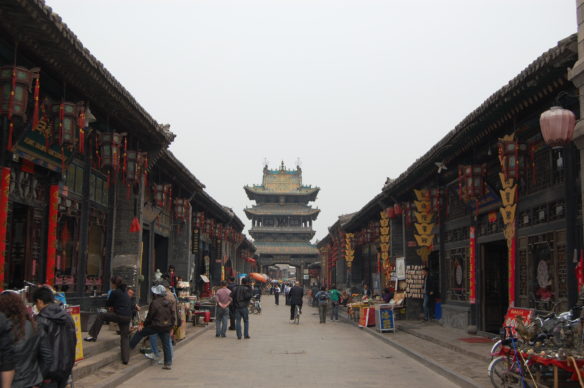
On a nine-day trip to China with the GHF (Global Heritage Fund), I explored some truly incredible, off-the-beaten-path historical sites, including my favorite stop, the ancient walled city of Pingyao.
Treasures of China’s Heritage: Touring with the Global Heritage Fund
(Third in a Seven-part series)
Fujian and Shanxi
I recently had the privilege of taking a nine-day trip to China in the company of board members of the Palo Alto-based Global Heritage Fund (GHF)—an organization devoted to supporting underdeveloped rural areas worldwide. Although I’d previously traveled extensively in China, this unusual excursion was uniquely enriching and memorable. It’s my pleasure to share this experience with you in a series of recollections illustrated primarily by my personal photographs. Links to the other installments in this series can be found at the end of this article.
After exploring the port town of Zhangzhou and touring ancient earthen residences called “tulous” in southeast China, we next travelled north to the ancient walled city of Pingyao.
DAY 4: THE ANCIENT CITY OF PINGYAO IN SHANXI
It’s said that to see China 1,000 years ago, go to Beijing; to see China 3,000 years ago, go to Xian; and to see China 5,000 years ago, go to the northern province of Shanxi—our next destination.

THE FILM THAT DREW ME TO PINGYAO
I was so impressed by Chinese director Zhang Yimou’s stunning 1991 movie Raise the Red Lantern, part of which is set in an eighteenth-century courtyard house near Pingyao, that I immediately added that city to my list of “1001 Places to Visit.”
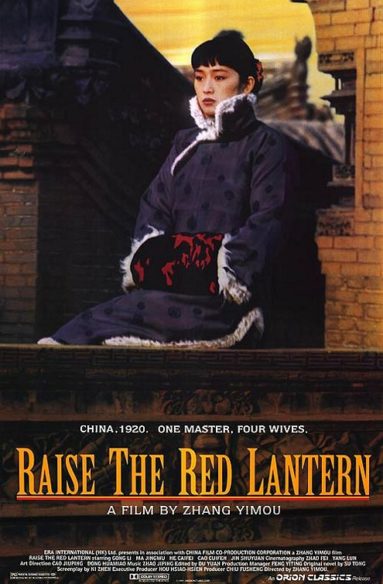
The Qiao Compound, located around eighteen miles from historic Pingyao city, was the setting for Raise the Red Lantern.
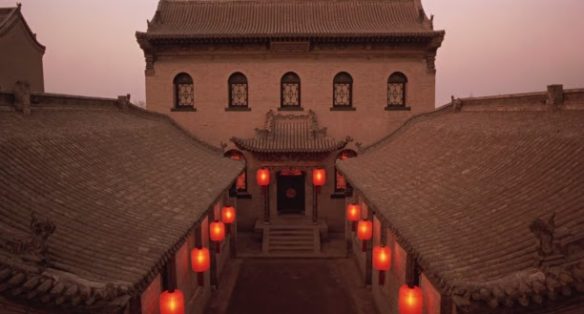
Once the private residence of a wealthy merchant, the Qiao Compound has six large and nineteen smaller courtyards and is now a popular museum.
ANCIENT WALLED CITY
Remarkably intact, the ancient walled city of Pingyao was the highlight of the GHF trip for me. Built during the Ming and Qing Dynasties (1368–1911), it is situated on a former trade route from Beijing to Xi’an, the eastern terminus of the ancient trading route known as the Silk Road.
Shanxi Province in northern China (not to be confused with Shanxxi Province, directly west) is home to thirty-four million people.
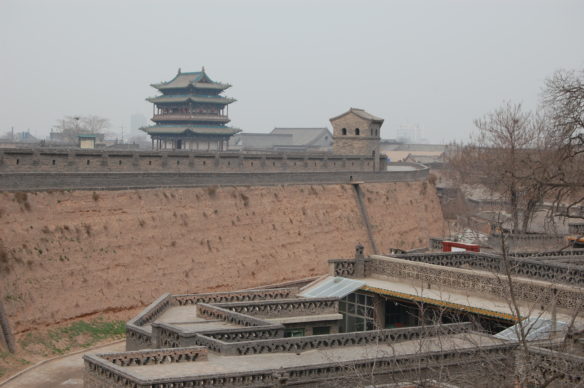
Nearly every ancient Chinese city was surrounded by a wall, but, in the name of progress, most have been torn down. Pingyao is one of the few cities whose walls are intact.
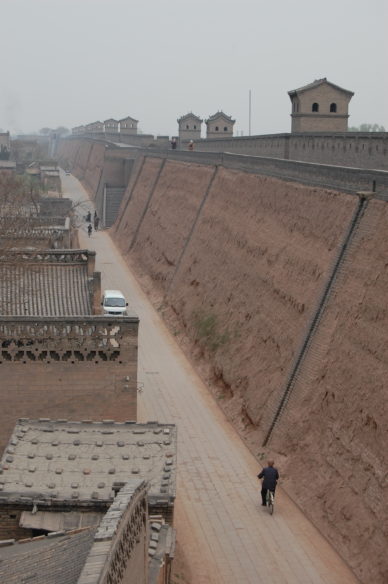
Dating from the Ming Dynasty, the crenellated city wall has been repaired over time, but it remains virtually unchanged.
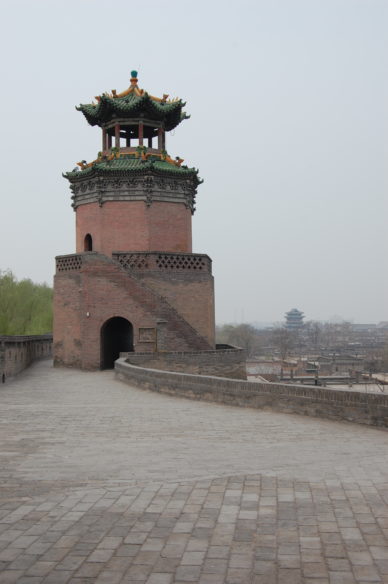
Pingyao’s wall has six gates, each facing a different direction. Because this creates an outline resembling a turtle, Pingyao is sometimes called the “Turtle City.”
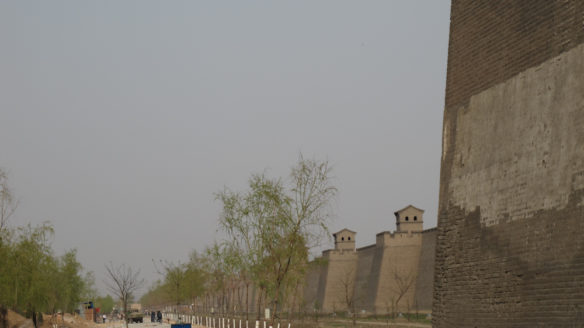
Rebuilt in 1370, Pingyao’s wall comprises four towers, seventy-two watchtowers, and more than 3,000 “crenels” or battlements, all surrounded by a moat.
A UNESCO SITE
According to GHF founder (and our trip leader) Jeff Morgan, Pingyao remains relatively undiscovered. “It’s the best place in China,” he explained to us, “the cradle of the Han Chinese, an area as big as California. The Great Wall extends along the entire north region, which is comparable to a wall separating Oregon and California.”
Since it was designated a UNESCO World Heritage Site in 1997, an increasing number of tourists have come here to climb the old ramparts, amble through the worn cobblestone pedestrian streets, and get a sense of visiting the past.

Pingyao is considered the best-preserved ancient city in China. After the country’s first draft bank was established here in the nineteenth century, it became a rich banking capital.
PINGYAO’S NEW CITY OUTSIDE THE WALLS
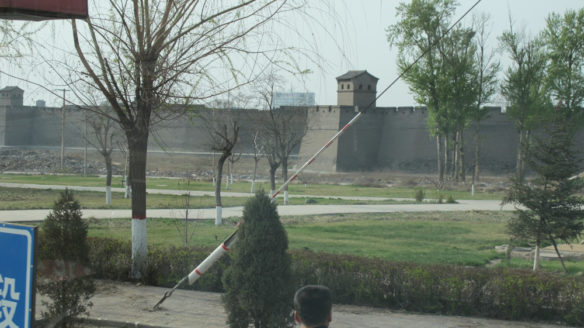
I was excited to spy Pingyao’s massive, thirty-two-foot-high crenellated walls in the distance, but as we approached the “New City” outside the walls, I wondered if I really would glimpse the past after all.

A host of new construction projects, together with the dry climate, made for a dusty, chaotic scene.
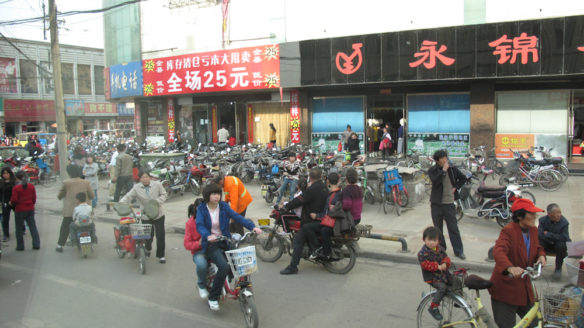
Although vehicular traffic is restricted within the walls, the streets outside are clogged with bicycles, motorized bikes, and carts. Pedestrians must proceed with caution.
THE ANCIENT CITY
Upon arriving at one of the six gates of the walled city, we transferred from our bus to an electric trolley that carried us to our hotel through streets that are off-limits to automobiles.
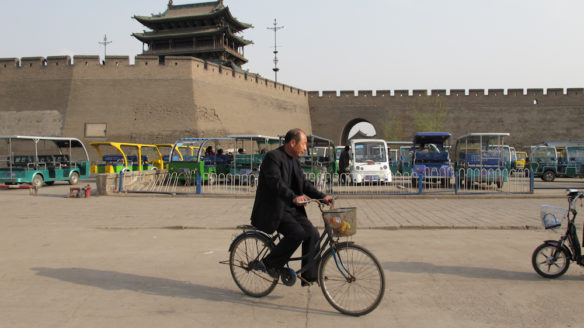
A poor city, Pingyao could never afford to raze its walls as other cities did; so, happily—and uniquely—they are almost fully intact today.
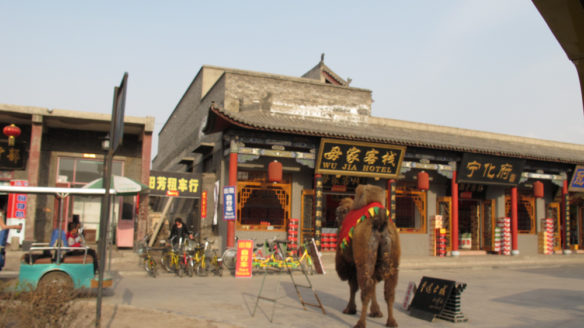
As we passed through the gates into the protected inner city, I was astonished to spot a camel—one clue to the fact that this remote outpost is starting to cater to the tourist trade.
FIRST IMPRESSION
Although the buildings were crumbling and gray from centuries of accumulated soot, I was in heaven. This is what an eager traveler hopes for—coming upon a place that modernization has barely touched.

We enjoyed observing the townsfolk going about their business, some sitting on stoops that are the equivalent of our front porches.
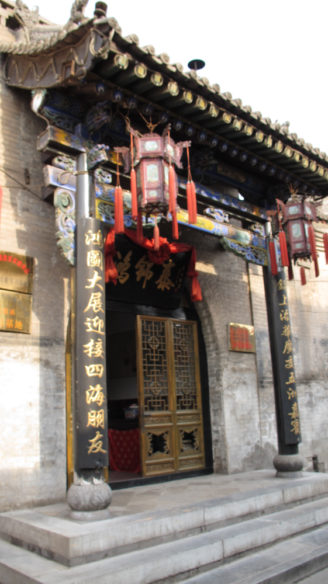
Not surprisingly, red lanterns hang from many of the city’s buildings and storefronts.
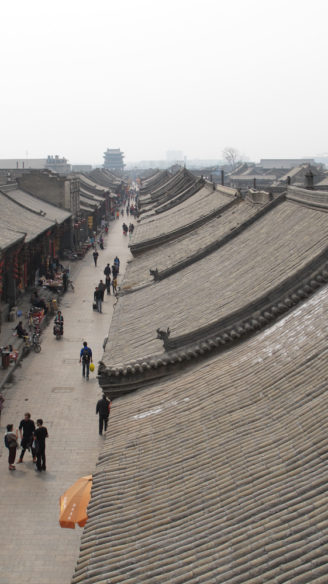
The town is organized in a grid made up of four main streets (North, South, West, and East), eight branch streets, and seventy-two lanes—making it easy to find one’s way around.
ANCIENT COURTYARD HOUSES
Within the black brick walls of the city are some 4,000 family residences known as siheyuan. About 400 of these courtyard dwellings are well-preserved. Viewing the mix of architectural styles that evolved over the six centuries of the Ming and Qing Dynasties, we did indeed feel as if we had stepped back in time.
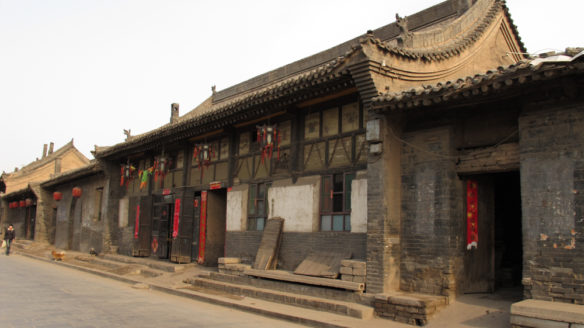
Courtyard houses, usually one or two stories high with four sides, are typically made of earth, brick, and wood, topped with steep, decorative roofs of grey tile, and built around a private inner courtyard.
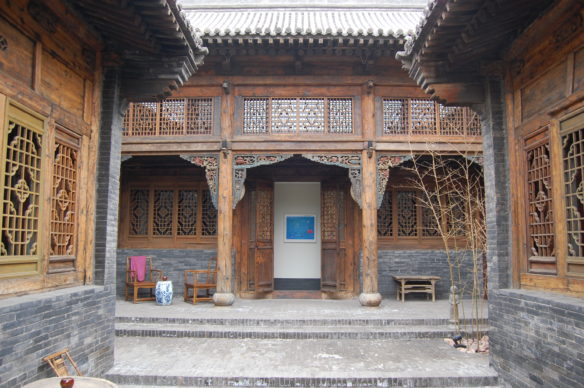
This example of an inner courtyard could be found at our hotel, the Jing Residence.
WALKING THE ANCIENT TOWN
We couldn’t wait to explore the 2,700-year-old streets and we weren’t disappointed.

Our group of Global Heritage Fund board members and leaders.
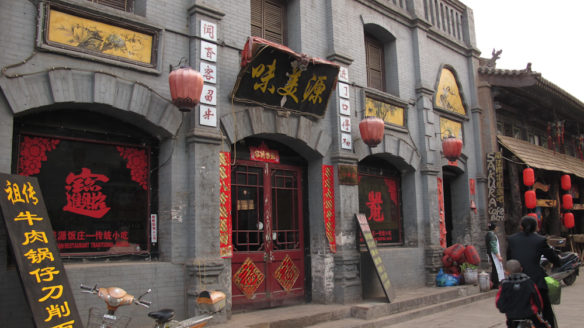
Street life here seems to have remained unchanged over the centuries. Cars are prohibited, leaving the quiet roads to pedestrians and cyclists.
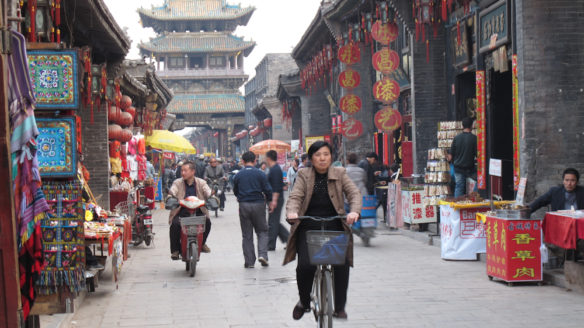
The main streets of Pingyao, lined with vendors selling curios, resemble an endless street bazaar.

Pingyao has some of the best-preserved traditional architecture in China, constructed during the late Ming and Qing dynasties.

Once the most important trading and financial center in China, this prosperous city was home to some of the country’s earliest commercial banks.
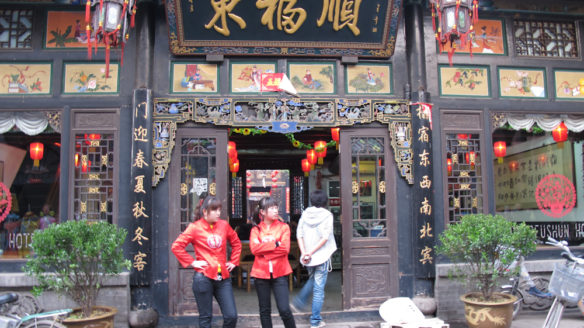
At one of the many restaurants that dot the streets, uniformed staff serve locals and visitors.
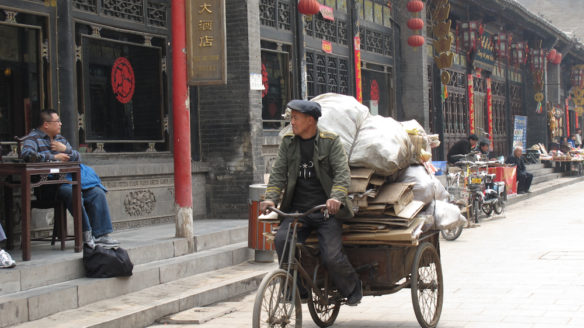
As I walked along cobblestone streets bathed in the glow of red lanterns, protected by the town’s ancient walls, I felt as if I were in a movie.
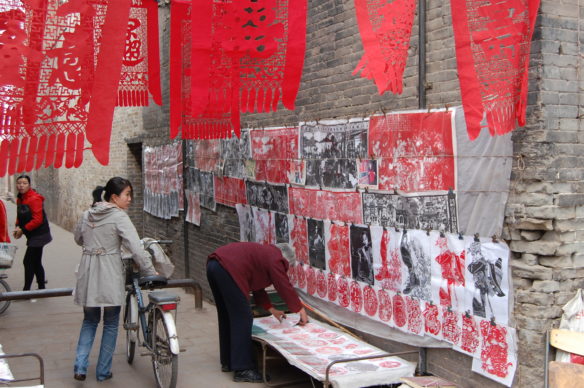
Street vendors displayed the traditional Chinese craft of paper-cutting (jianzhi), which is still popular today.
TOURISM IN PINGYAO
With tourism rising, many worry about the future of the city.
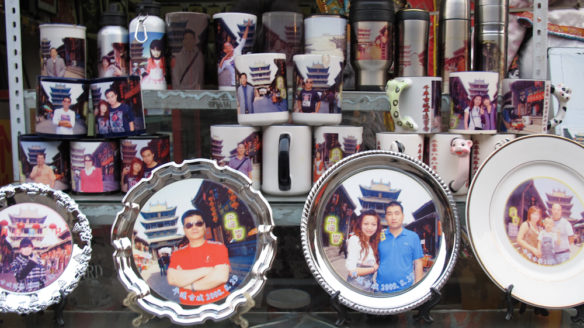
Now that Pingyao has been “discovered,” getting here is easier and an increasing number of vendors hawk cheap souvenirs. I share the locals’ concern that its authentic character will disappear.
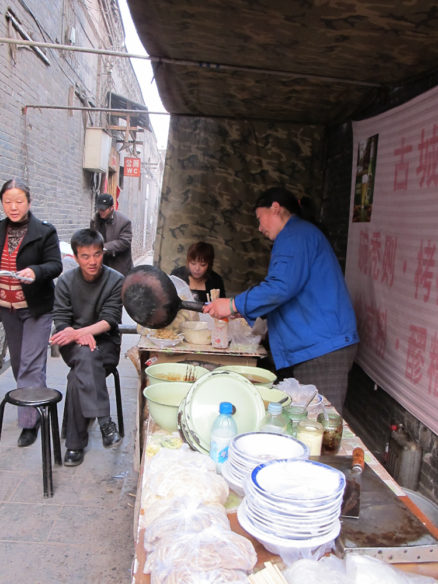
In every part of China I’ve visited, no matter how remote or bustling, it seems there are vendors ready to provide a quick bite of local food.

Even in this relatively remote locale, street fare included international favorites: Italian espresso, pizza, and “wholemeal” bread.
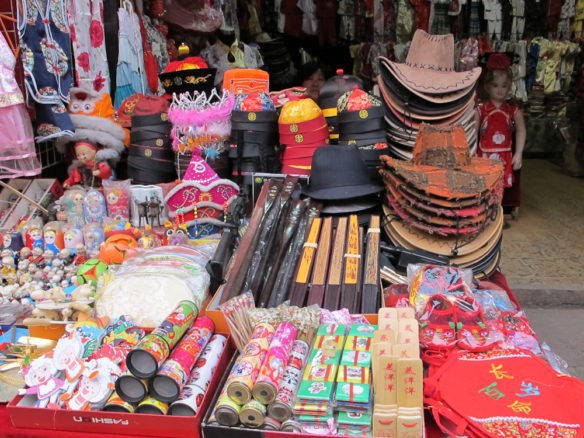
Regrettably, much of what is marketed to tourists resembles what you would find in the Chinatown neighborhoods of New York or San Francisco—although there is slightly more variety.
CITY PLANNING IN THE OLD TOWN
Like Florence, all of Pingyao is a museum, with 4,000 Ming and Qing-era courtyard buildings plus historic storefronts, sites, and temples. About 50,000 residents live in the old city, most descended from the original settlers.
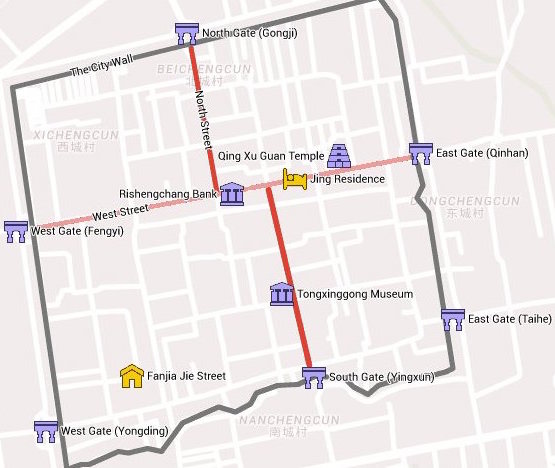
The tiny (less than one square mile) ancient city was constructed according to a very logical, symmetrical, and rectilinear Han plan in which the main north-south streets end at the city gates.

South and West Avenues are lined with shops and buildings dating back to the Ming and Qing Dynasties.
JING RESIDENCE
While in Pingyao, we stayed at the Jing Residence, a Relais & Châteaux boutique hotel in the heart of Old Town. It was unique and so beautiful that we found it hard to take our leave.

The only hotel in the city located in a historic courtyard building, the nineteen-room Jing Residence at 16 East Street is the former home of a Qing Dynasty silk merchant. It has been meticulously restored to its former glory.
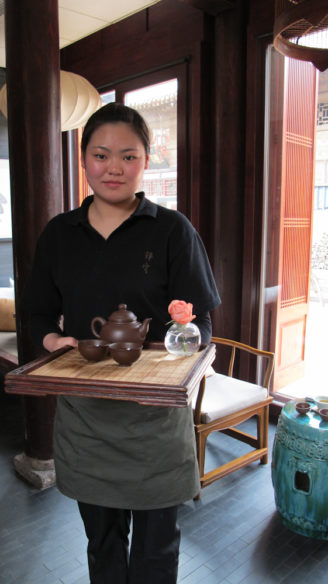
As we passed through the tall wooden doors of the 260-year-old house, we left the noisy street behind and entered a serene world of the past. The typically hospitable proprietors welcomed us with tea.
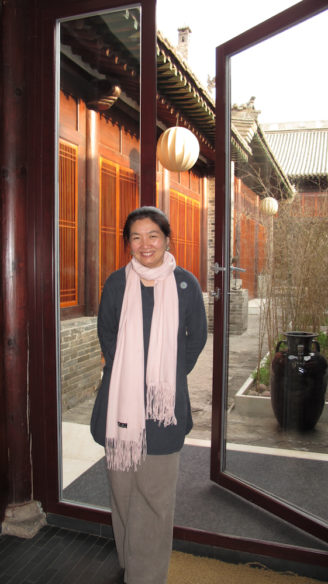
Jing Residence was opened a few years ago by Yang Jing, a Beijing-based businesswoman who used part of the fortune she’d amassed in the steel business to fulfill her long-held dream of owning a courtyard house.
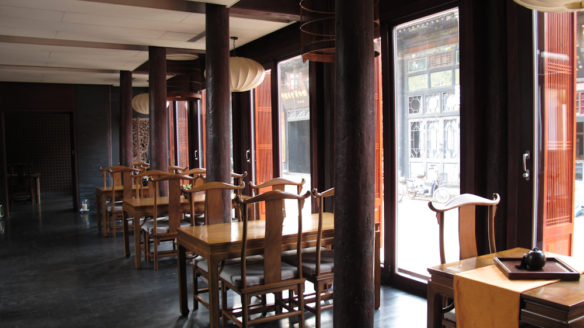
Once Yang Jing had begun renovations, her elderly next-door neighbors offered to sell her their ancient homes as well, so they could move into newer residences. She turned those courtyard houses into a boutique hotel.
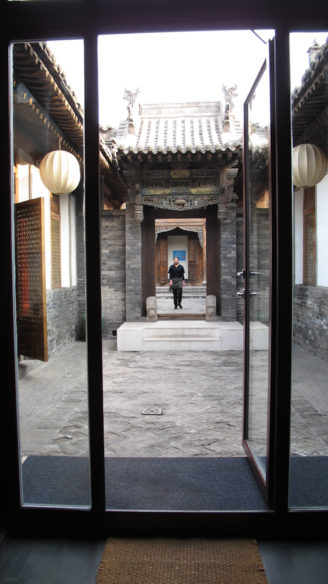
This was our first view of one of the open courtyards sheltered within the black brick and gray-tiled houses.
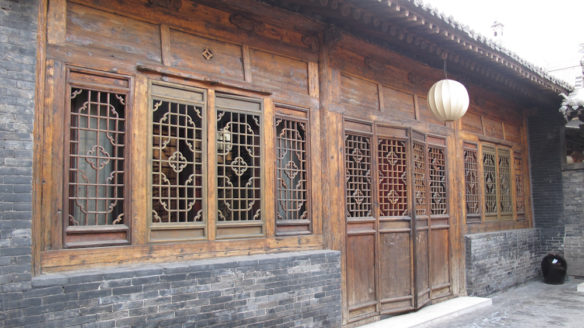
We felt cloistered from the world in the open courtyards of the Jing Residence. The original upturned eaves, gray tile roofs, and brick-paved walkways have been superbly renovated.
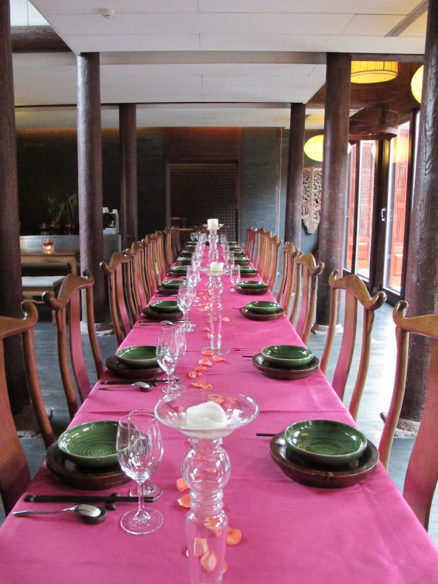
Jing Residence is furnished with modernized versions of classical Chinese furniture made of precious, exotic wood. The elegant style of the decor still seems fresh.

The silhouettes of the rooflines are eye-catching; dragons and other animal sculptures are often featured among the decorative elements.

Thanks to our hotel’s courtyard design, I woke within a quiet cocoon, hearing only the sounds of birds and none of the bustle of the town.
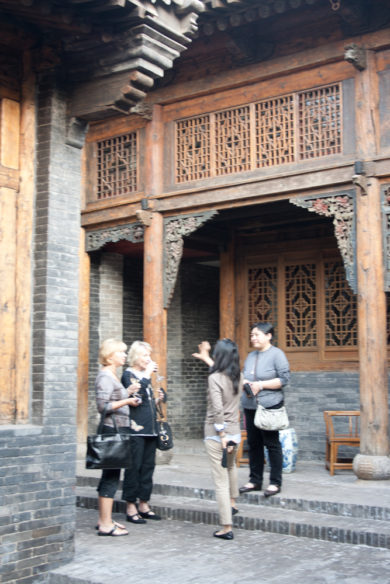
Our GHF group took a tour of the property so we could fully admire the interesting architectural details.
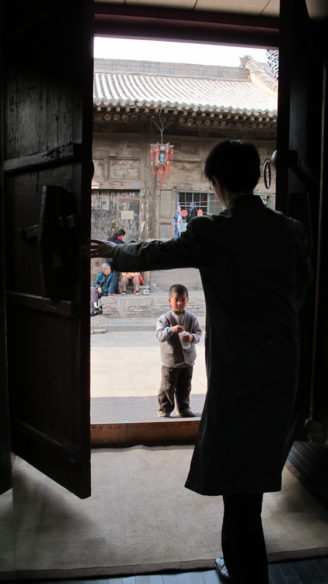
This little boy crossed the street to take a closer look at us, curious about the foreigners.
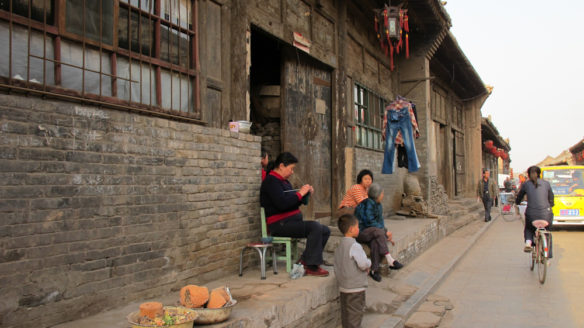
Across the street from our residence was a house in need of renovation.
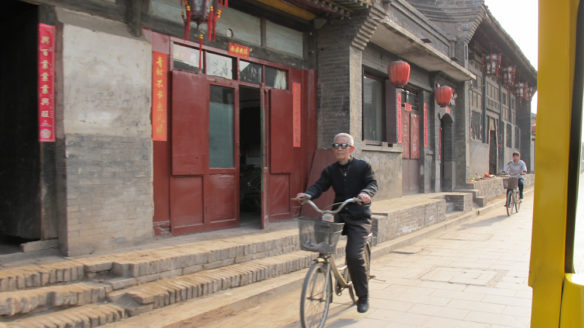
From our window, we watched our neighbors’ daily activities.
WELCOME DINNER WITH OFFICIALS
GHF hosted a Sunday night dinner at Jing Residence for top local officials, including bureaucrats, and scholars. We all enjoyed what was surely some of the best food in town.
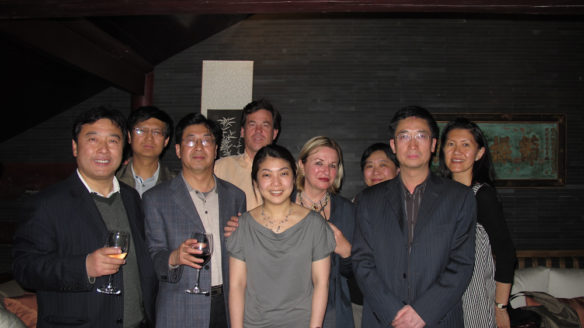
Before the official dinner, we sipped cocktails with the official Chinese delegation.

Judy Koch, Jasmine Arneja, and Sandee McCaffrey.
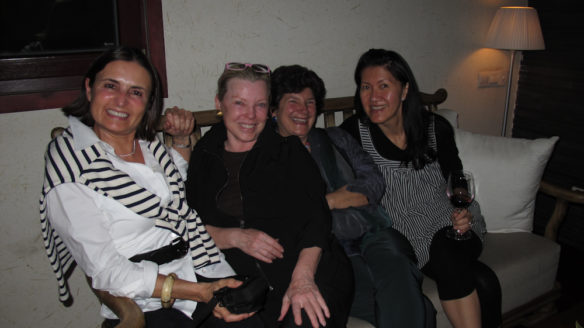
Marie-Françoise Bertrand, Jeanne Lawrence, Edwina Sassoon, and Jasmine Arneja.

For dinner, a long table was set up in the in the cozy, candle-lit dining room.
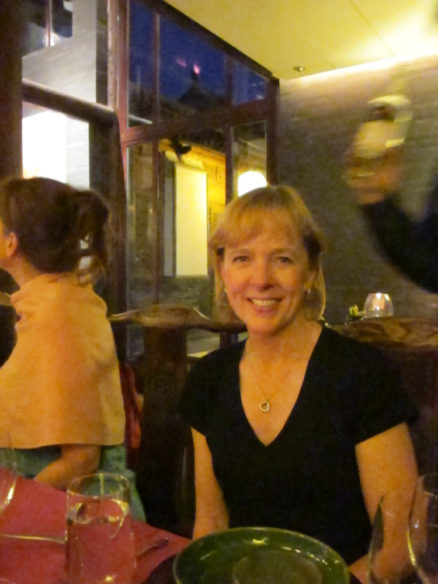
Cathy McMurtry.
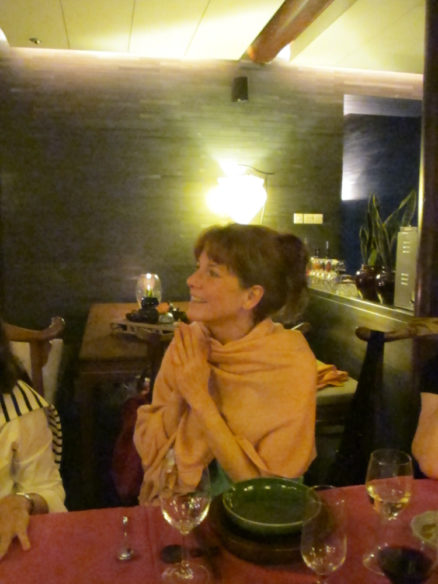
Lucie Jay.

Marie-Françoise Bertrand.
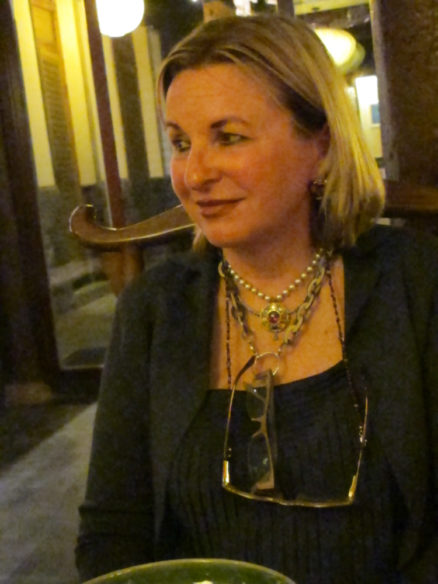
Jan Scholes.

Linda Chen.
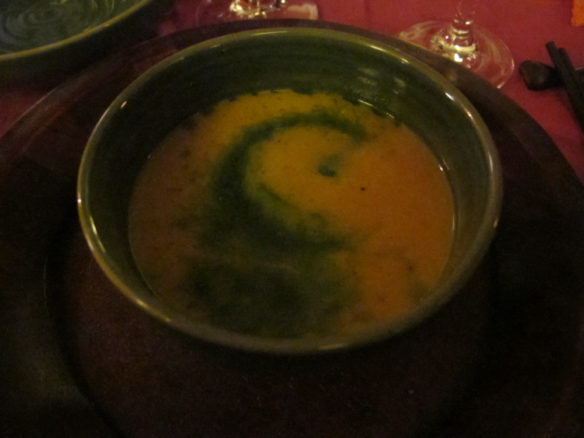
Our vegetable soup arrived swirled in a yin-yang pattern of carrots and spinach.
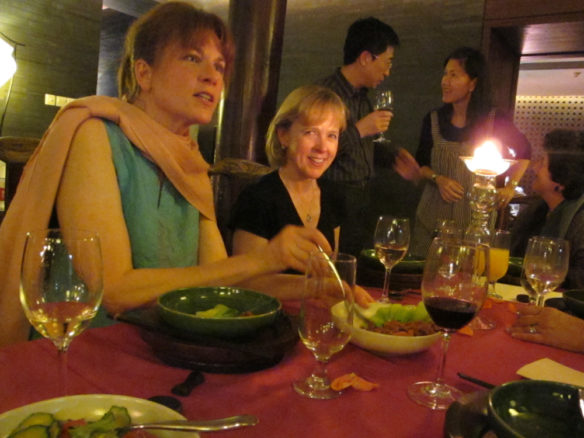
Lucie Jay and Cathy McMurtry sample some of the many varieties of noodles for which this province is known.
A MAGICAL EVENING STROLL
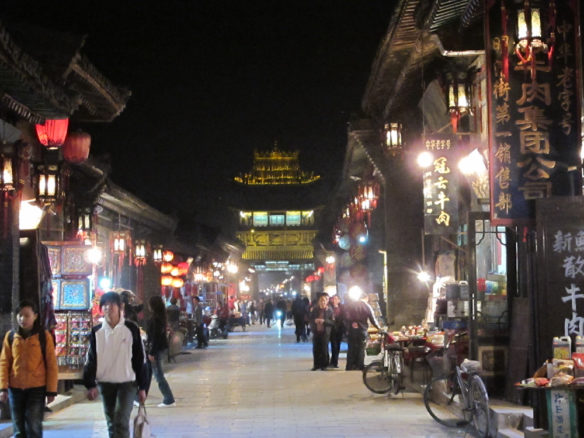
After dinner, I ventured out alone to immerse myself in the historic atmosphere of Pingyao.
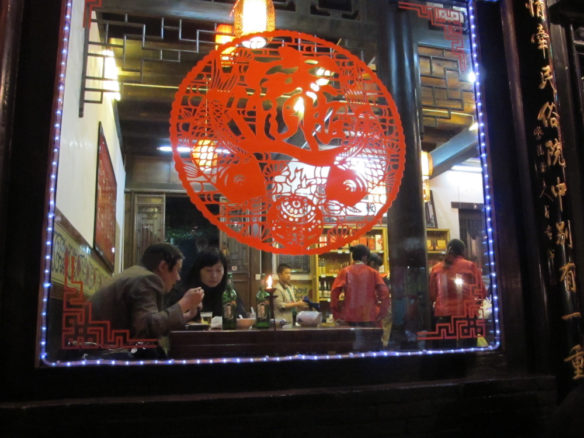
On West Street, I passed many commercial shops, guesthouses, and restaurants such as this one.

As the hour grew late, the vendors packed up their wares and headed home.
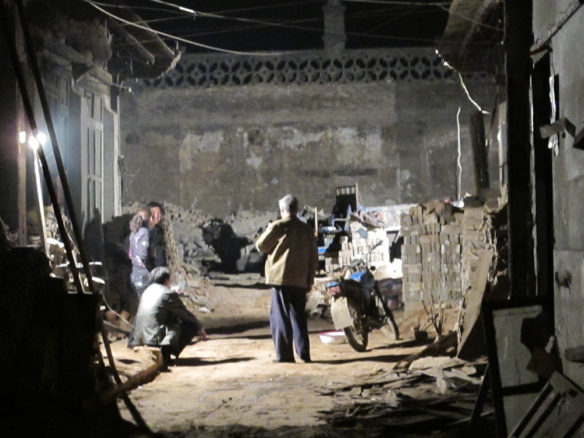
In China, many kinds of work continue around the clock. Although it was past the dinner hour when I took my walk, construction workers were still on the job.
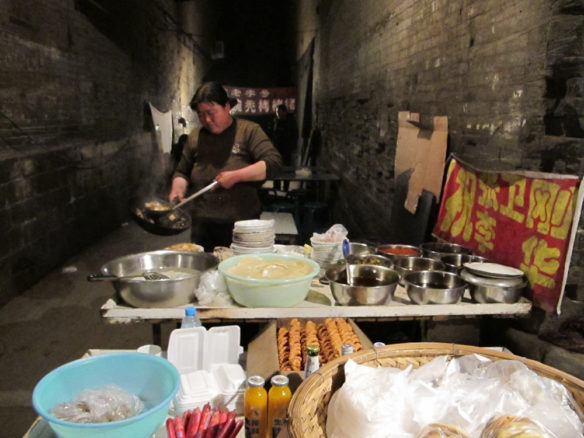
Street-food hawkers prepared to feed the late-night crowd.

The cobblestone streets were lit with the glow of Pingyao’s many red lanterns.
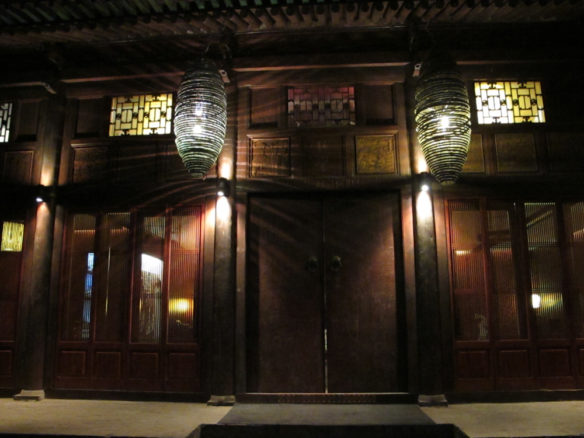
Stylized, oversized lanterns at the Jing Residence greeted me as I returned to the hotel.
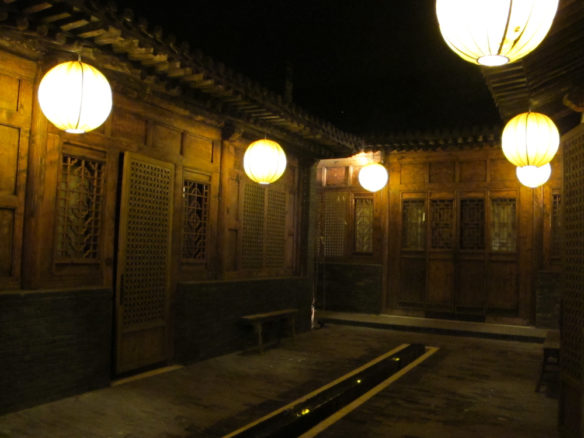
Dramatic night lighting enhanced the Jing courtyard’s architectural features. As I strolled to my room, I felt Pingyao’s magic.
In my next post, I share my experiences on Day 5, our second in Pingyao, when we walked the city’s famous walls, enjoyed a typical local meal, and toured China’s first draft bank.
Visit globalheritagefund.org to learn more about the Global Heritage Fund.
LINKS TO OTHER POSTS IN THIS SERIES
Part 1: Days 1 and 2 — Visiting Hakka toulous (earthen residences) in Fujian Province.
Part 2: More of Day 2 and Day 3 — the historic port town of Zhangzhou, plus more tulous in Pinghe and Nanjing counties.
Photographs by Jeanne Lawrence & Global Heritage Fund.
*Urbanite Jeanne Lawrence reports on lifestyle and travel from her homes in San Francisco, Shanghai, and New York, and wherever else she finds a good story.
